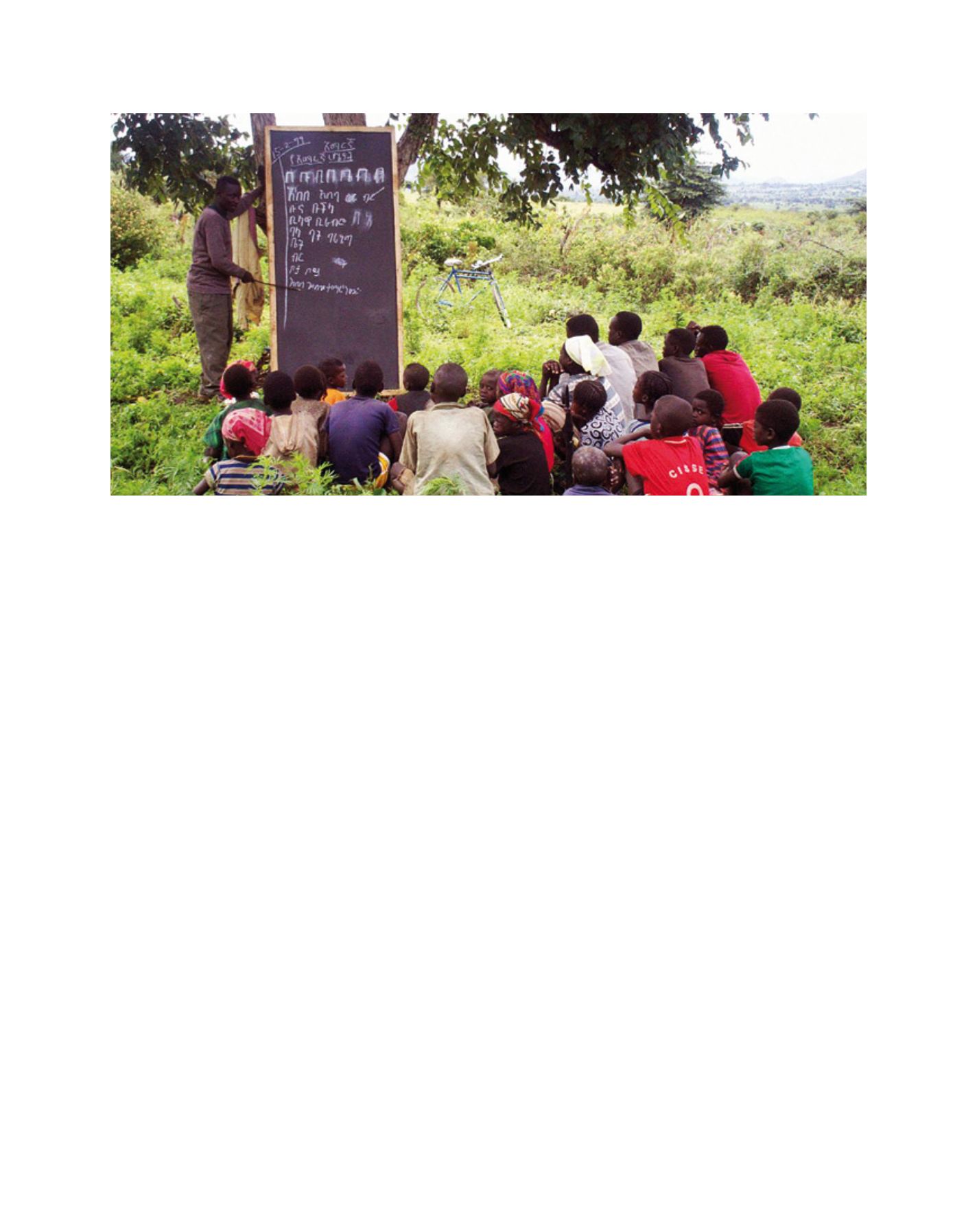

[
] 176
of ESD learning outcomes could be adjusted by coun-
tries to their own needs. The framework would seek to
bridge the divide between atomised and interdiscipli-
nary learning and could be applied to various situations,
levels and settings of education.
This proposed assessment framework for ESD learn-
ing outcomes could be developed using the considerable
repository of knowledge within the United Nations that
links to learning and education.
The following four United Nations initiatives regard-
ing education and learning could be considered as the
basis for the development of the assessment framework
for ESD learning outcomes.
Assessment framework for ESD learning outcomes:
four elements for consideration
Four pillars of learning: Delors Report
In 1993, UNESCO established the International
Commission on Education for the Twenty-first
Century. Three years later, the commission submitted
an insightful report titled
Learning: the Treasure Within
(also popularly known as the Delors Report) wherein
the authors propose a blueprint for education for the
new century. The report underscores the frequently
stated need for people to “return to education in order
to deal with new situations arising in their personal and
working lives”.
3
The notion of enhancement of inner capacities and
the concept of learning throughout life to address the
changes that the rapidly changing world presents are
elements that underpin the main recommendations of
the report. To this end, the Delors Report proposes that
all education should be organized around four pillars
of learning:
dual responsibility: first, as leader and second, as implementer of
the decade. In response, UNESCO has developed and put in place
the necessary mechanisms to facilitate delivery on its designated
responsibilities.
The opportunity provided by this publication, under the thought-
provoking title
Tomorrow Today
, encourages the question of how
UNESCO, as an intellectual organization, is preparing for the years
following the end of the decade. UNESCO has already contributed
significantly to ESD within the framework of the decade in terms
of both policy and practice. The momentum created by the DESD
needs to be maintained and the achievements accomplished to
date taken into account in order to achieve the cherished goal of a
sustainable future.
Looking ahead
By focusing on education that encourages the empowerment of both
children and adults, the DESD underscores the central role of educa-
tion as a transformation agent. Transformation in this context refers
to changes in the way people, children and adults alike, interact with
each other and use environmental and ecological resources, with a
view to sustaining them. It also refers to the changes through which
people fashion their lives and actions with the aim of achieving
or contributing to social and economic justice, locally and glob-
ally.
2
All activities under the DESD framework seek to achieve this
desired transformation. To this end, an impressive body of ESD
programmes, projects and training materials have been developed
within the framework of the decade and some even prior to it.
A central question is how to know whether change has indeed
taken place – and if it has, whether it is really directing us towards
the desired goal of a sustainable future. How do we know whether
we have learnt to think critically or in a systemic way?
Proposing a way to assess the learning outcomes of the ESD enter-
prise could be UNESCO’s contribution for the years to come after
the decade. The development of a global framework for assessment
Education for sustainable development: Learning to ensure a better tomorrow
Image: © UNESCO/Katy Anis
















